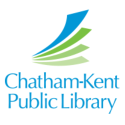The policies and protocols in place, if a positive COVID-19 case arises at a local school, were addressed during a press conference last week.
Deb Crawford, director of education for the St. Clair Catholic District School Board, John Howitt, director of education for the Lambton-Kent District School Board and Dr. David Colby, Chief Medical Officer of Health in Chatham-Kent, discussed the issue.
“If a positive case is identified, then the school boards then have a protocol, we have operational guidance on COVID-19 in our schools, as well as a shared protocol that we will have between our boards… for how we’re going to manage positive cases,” Crawford said.
“We do have a procedural guideline and all of this is guided by a provincial protocol that is coming out of the Ministry of Education and the Ministry of Health. We have a COVID-19 confirmed case and outbreak procedural guideline. At the current moment, this is being reviewed by our Public Health partners.
Crawford added: “In the procedural guideline, it would outline responsibilities for schools, individually principals, the Public Health Unit, the communication plan, the outbreak management, when we would re-open a school, what to do when an outbreak is declared to be over, and various scenarios from managing different situations that we may run into in the future.”
Howitt said the local Public Health Units will know about a positive COVID-19 test before the school boards.
“I think it’s really important to recognize that school boards and school staff are not from the medical profession,” he said.
“During the school day, we may have students with symptoms, for which we have protocols to follow. But an actual positive test is a Public Health responsibility and they will know before us and we will take their direction.”
Dr. Colby said there “very detailed” Provincial protocols in place for all kinds of scenarios.
“There are protocols if a positive test shows up, how many students have to be isolated, so we have various strong Provincial guidelines to do that. It will be the local Health Units, whether it’s Sarnia-Lambton or Chatham-Kent, that operationalize those isolation plans.”
Dr. Colby said these plans could include isolation of all the contacts.
“Which in a school scenario, could be considerable,” he said.
“But that’s exactly why there has been such effort, to divide students into cohorts, so that full schools don’t have to be isolated. If there is an outbreak, where you have multiple cases in a school, that might be necessary.”
Dr. Colby added every community across Ontario is in the same boat.
“The only way we’re going to see how this works exactly is to operationalize these plans as scenarios come up,” he said.
“We’ll be learning from all of the Health Units in Ontario. We’re not the only ones that are coping with this. Every jurisdiction in Ontario is coping with this. All of the school boards and the health authorities are very communicative with one another and with the various Ministries… and will get the job done as we need to.”
As reported last week from the same press conference, more teachers have been hired by the Lambton-Kent District School Board and the St. Clair Catholic District School Board, in order to reduce class sizes across both boards. Details, here.
The LKDSB’s full back-to-school plan can be read, here.
The SCCDSB’s full back-to-school plan can be read, here.
Provincial back-to-school plan includes investments in PPE
On Tuesday, September 8, 2020 the Ontario government announced they are providing up to $1.3-billion in critical supports and has delivered more than 37-million pieces of personal protective equipment (PPE) to safely reopen classrooms across the province.
“Our entire team has been working around the clock over the last few weeks to make sure all of the public health measures are in place to safely welcome back our students and staff,” stated Premier Doug Ford in a media release.
“This school year will be unlike any we have ever seen, but by working together, we can all play a part to keep our children, teachers and education workers safe and ensure our students continue to thrive and be inspired to learn during these extraordinary times.”
Provincial officials say the government has taken the following steps to make schools as safe as possible:
– Providing more funding than any jurisdiction in the country to implement physical distancing measures, support hiring of up to 1,300 custodians and adopt enhanced cleaning protocols in schools and on school buses, and hire more teachers to reduce class sizes.
– Hiring up to 625 school-focused nurses to provide rapid-response support to schools and boards, and facilitate public health measures, including screening, surveillance testing, tracing and mitigation strategies.
– Working in collaboration with the Ministry of Government and Consumer Services to ensure that sufficient PPE has been delivered to all 72 school boards and 10 education authorities, including more than 19.5 million masks, 16 million gloves, 317,000 face shields, 320,000 bottles of hand sanitizer, and 218,000 containers of disinfectant, among other critical supplies; and,
– Providing students and families with clear and transparent standards for those that choose fully remote virtual learnin g, which is teacher-led, timetabled, live, synchronous, and on a regular daily schedule.
“Our plan is the most cautious, safe and comprehensive in the country, fully funded and fully informed by leading medical leaders to ensure we reduce the risk, support positive mental health, and improve the safety of all students and staff,” stated Stephen Lecce, Minister of Education, in a media release.
“I remain inspired by our students, and we owe it to them to continue to do our part to stop the spread in our communities to ensure schools can remain safe and positive learning spaces.”
Provincial officials say the following public health protocols and procedures will be implemented to help protect students, teachers, staff and visitors:
– Parents must screen their children and all staff must self-screen every day before attending school. Students and staff who are unwell must stay home from school.
– Schools must immediately report any suspected or confirmed cases of COVID-19 within the school to the local public health unit. Every day, school boards must report any staff or student absences due to confirmed cases of COVID-19 to the ministry.
– Students in Grades 4-12 will be required to wear face coverings (non-medical or cloth masks) indoors in school, including in hallways, entrances and during classes. Face coverings are not required but are encouraged for students up to Grade 3. The province is funding each school board to provide PPE to teachers and other school-based staff, including medical masks and eye protection (for example, face shields).
– Schools will teach and remind students about appropriate hand hygiene and provide breaks in schedules to allow students to wash their hands. Teachers and staff are also receiving additional health and safety training.
– Each student will be kept with the same group of children and teachers as much as possible throughout the school day.
– Schools will significantly limit visitors, including parents.
– Schools will keep rigorous daily class attendance records, seating charts, lists of bussed students, and approved daily visitors (e.g. supply and occasional teachers, custodians) for contact-tracing purposes.
“With the new school year beginning, the health and safety of students, teachers and staff is our government’s top priority,” stated Christine Elliott, Deputy Premier and Minister of Health, in a media release.
“We have been working closely with our public health experts and making the necessary investments to ensure safety measures and protocols are in place for returning to the classroom.”
The Ontario government has named Dr. Dirk Huyer as Coordinator, Provincial Outbreak Response.
In this role, he will lead the province’s efforts to prevent and minimize COVID-19 outbreaks in a number of sectors, including the education, child care, agriculture, and health care sectors, Provincial officials say.
















